How close are you to your furry best friend? Check for these signs your dog trusts you completely.
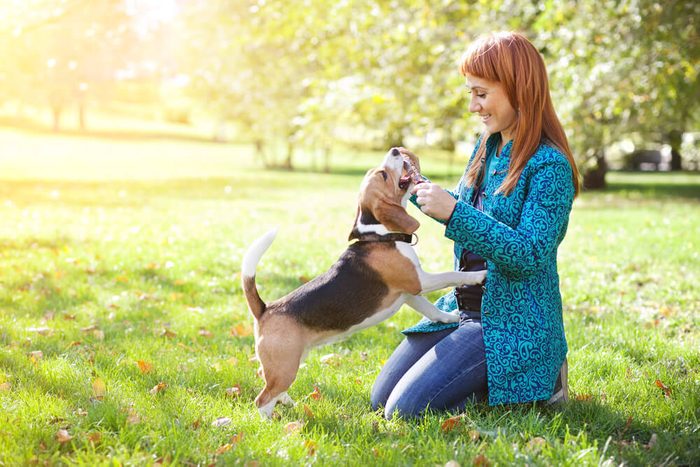
8 Signs Your Dog Really Does Trust You

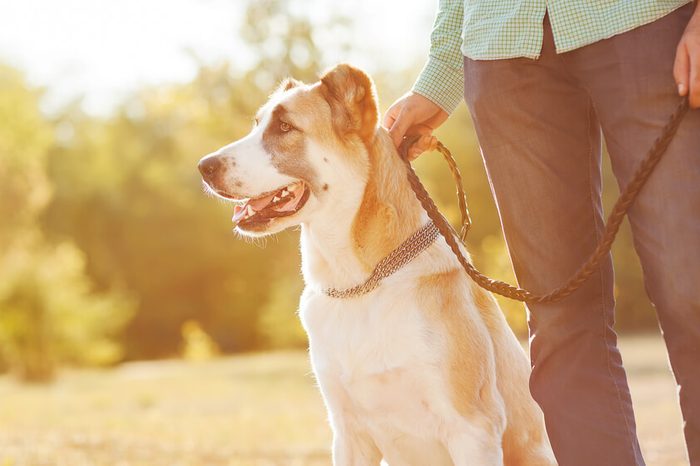
He learns your routines
Humans and animals perceive trust in different ways, says Vicki Stevens, director of program management and communications for companion animals at Humane World for Animals. Pets rely on routines for normalcy and to have comfortable, happy lives. So the best way to build a strong relationship with your dog is to stick to these routines and make them positive interactions.
Also, dogs are often smarter than we give them credit for. For example, if you feed your pup every day at 8 a.m. or take him for a walk as soon as you get home from work, he becomes conditioned to expect those things at those exact times. Once a routine is set, he’ll be on time to get that food or walk, and he’ll trust you’ll hold up your end of the arrangement.
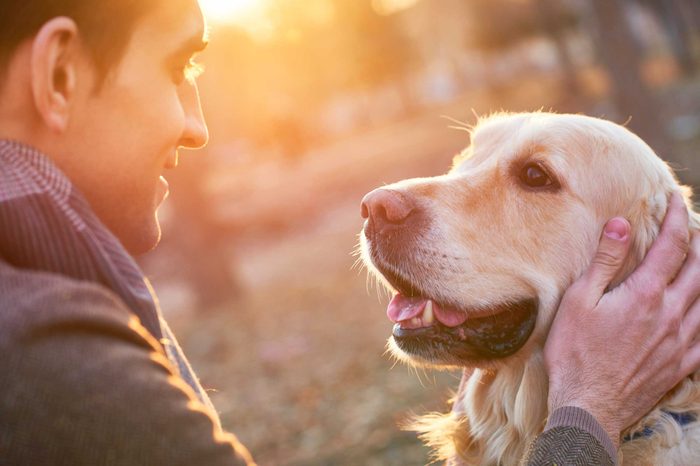
Her eyes say it all
A compelling study from the University of Japan found that when dogs and their owners stared into each other’s eyes during a 30-minute period, both of their oxytocin levels increased. Oxytocin is also known as the love hormone and the cuddle hormone (see where we’re going with this?). It helps mothers bond with their babies. And it spikes when we’re around someone we love and trust.
Lead scientist Takefumi Kikusui believes that this result could mean that the dogs were trying to form bonds with their owners—definitely a dog’s sign of love and trust. That said, pet expert Kenny Lamberti cautions that since dogs are all unique (like humans), staring doesn’t necessarily mean the same thing every time it happens. You need to take your dog’s body language and environment into consideration too.
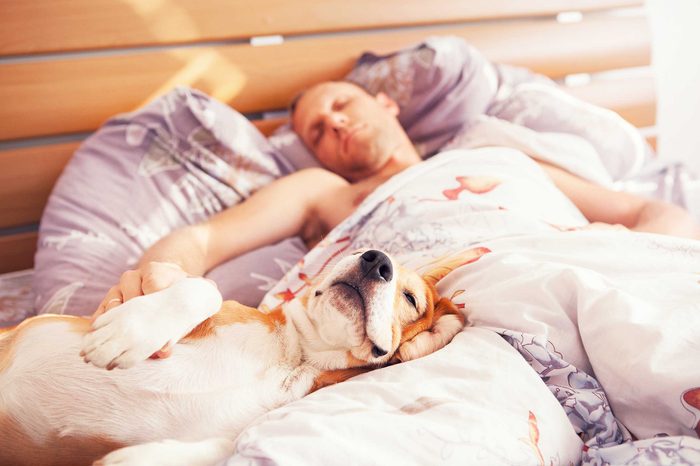
He sleeps in your room
“Typically, dogs sleep in a place that they are comfortable,” Lamberti writes, “so sleeping in an owner’s room could certainly be an indication of comfort.” It doesn’t matter if your pup chooses to curl up on the bed or floor—they’re both signs your dog trusts you. Still, you may want to carefully weigh the pros and cons before you invite your dog into your bed every night.
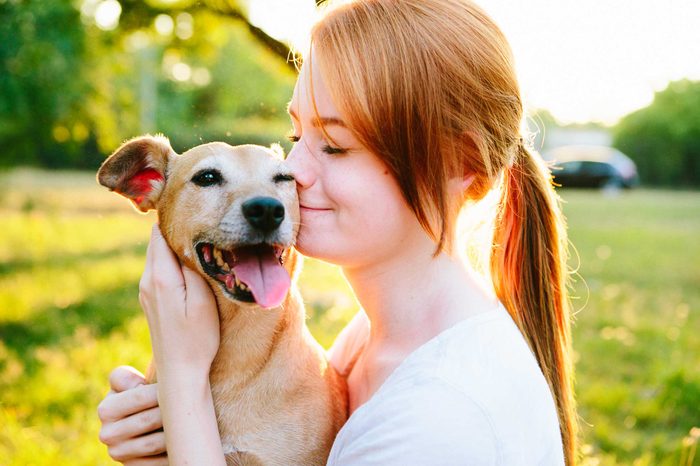
She doesn’t see you angry often
It’s normal to get frustrated with your dog, but a study from Brigham Young University suggests that your dog can read your emotions and is less likely to trust you when you’re in a bad mood. Researchers tracked how dogs reacted when they saw humans point to a hidden reward silently and then when using positive or negative facial and vocal expressions. When dogs saw the negative behaviors (frowning, a furrowed brow and a harsh voice), they were less willing to search for the treat. And a 2024 study found that dogs can smell when humans are stressed.
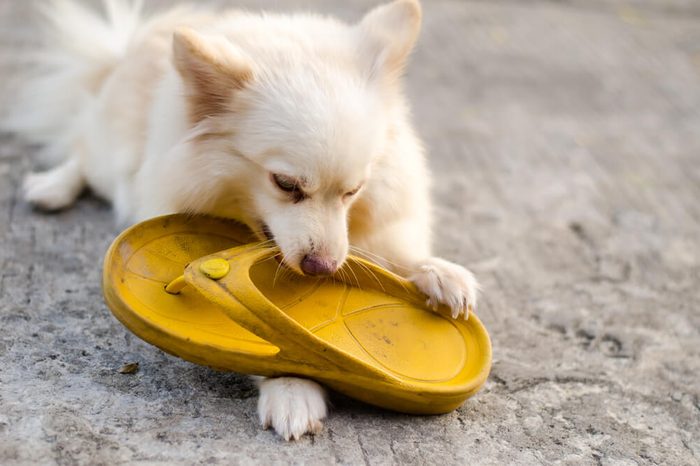
He steals your shoes
It may seem like weird canine behavior when your pup takes your scarf or favorite pair of shoes, but it’s one of the clear signs your dog trusts you. While this behavior may not solely be based on trust (your dog may just know you pay attention to him when he swipes your stuff), animal behaviorist Jessica Lockhart says your pooch could be comforted by having that connection to you, especially while you’re away. What better connection than something that smells just like you?
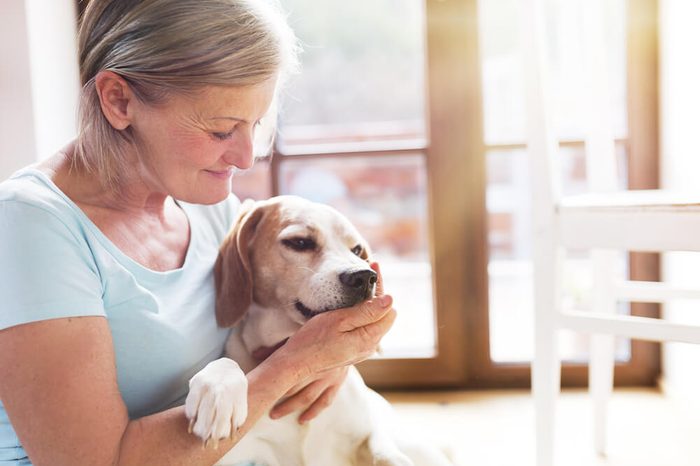
You understand his body language
Some dogs are naturally more relaxed around their owners, while others are more enthusiastic and jumpy. It varies depending on the dog, but if that behavior changes, that’s when you know something is wrong. “If you want a dog to trust you, it’s important to learn about dog body language so that you can read when your dog wants physical interaction and when he does not,” Lockhart says.
She recommends practicing “consent petting.” Only pet a dog if he doesn’t move away when you approach him. If he approaches you, pet him for three seconds, then look at his reaction. If he leans in or bops your hand, keep on petting. But if your dog licks his lips quickly, turns his head away or yawns, he’s had enough. “The more you listen to what your dog is telling you with their body,” Lockhart says, “the more trust you will build with your dog.”
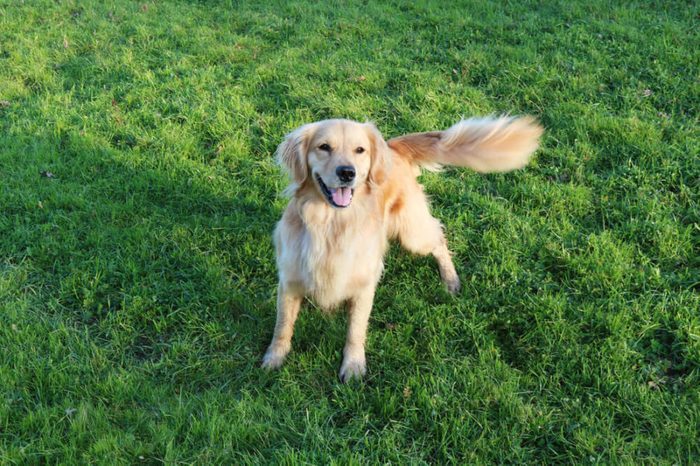
She wags her tail a certain way
It’s a common misconception that any ol’ tail wag means your dog is happy. In one study, Italian researchers concluded that the direction in which a dog wags her tail can reveal her emotions. Specifically, right-leaning wagging is a sign of positive emotions, and left-leaning wagging indicates negative ones. So if your dog wags her tail to the right when she sees you, you are officially on her list of favorite things in the world.
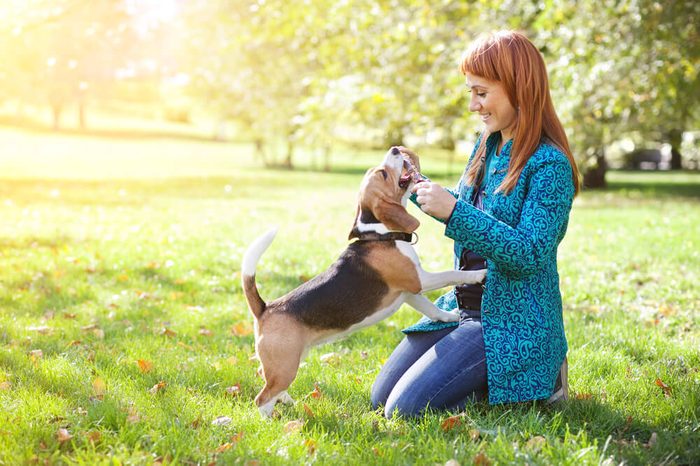
She follows your lead
The results of a 2013 study showed that dogs that have a strong bond with their owners behave similarly to the bond human children have with their parents. They look to their owners when they’re uncertain. They’re more likely to explore new places with their owners, as opposed to going alone or with a stranger. They even copy their owners’ emotions to a degree, showing anxiety when the owners are anxious or being calm when the owners are calm. Lockhart cautions that this may or may not be specifically a sign your dog trusts you, but it definitely demonstrates familiarity and comfort.
About the experts
|
Why trust us
At Reader’s Digest, we’re committed to producing high-quality content by writers with expertise and experience in their field in consultation with relevant, qualified experts. We rely on reputable primary sources, including government and professional organizations and academic institutions as well as our writers’ personal experiences where appropriate. We verify all facts and data, back them with credible sourcing and revisit them over time to ensure they remain accurate and up to date. Read more about our team, our contributors and our editorial policies.
Sources:
- CBS News: “Dogs and people bond through eye contact”
- Springer Nature: “Does affective information influence domestic dogs’ point-following behavior’”
- Scientific Reports: “The odour of an unfamiliar stressed or relaxed person affects dogs’ responses to a cognitive bias test”
- Current Biology: “Asymmetric tail-wagging responses by dogs to different emotive stimuli”
- Brill: “Owners as a secure base for their dogs”
- Vicki Stevens, director of program management and communications for companion animals at Humane World for Animals
- Kenny Lamberti, pet expert who has worked with Best Friends Animal Society, C.A.R.E. Companions and Animals for Reform and Equity, and the Humane Society of the United States
- Jessica Lockhart, CAAB, certified applied animal behaviorist, founder of Fairview Behavior Associates and assistant professor at the University of Wisconsin-River Falls




















